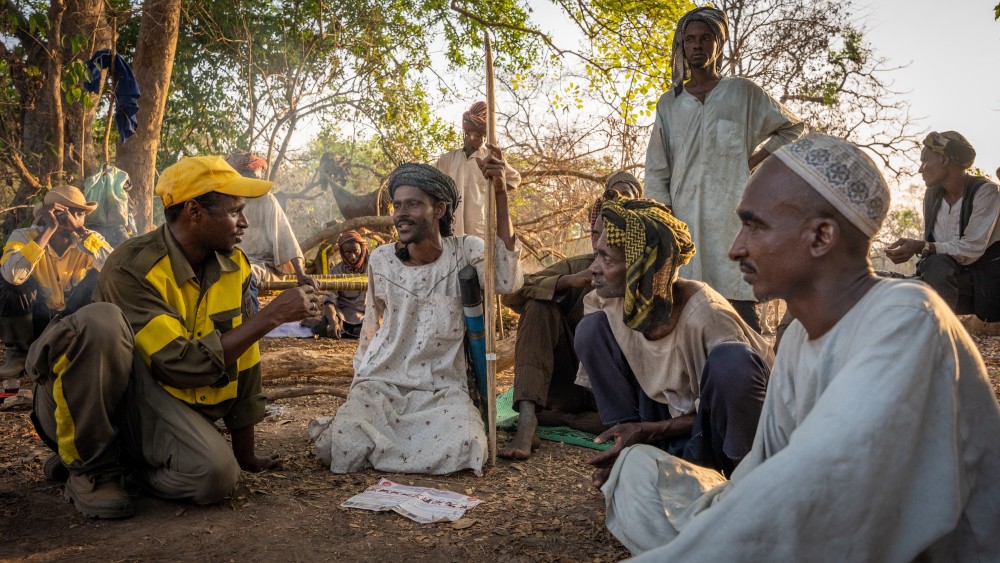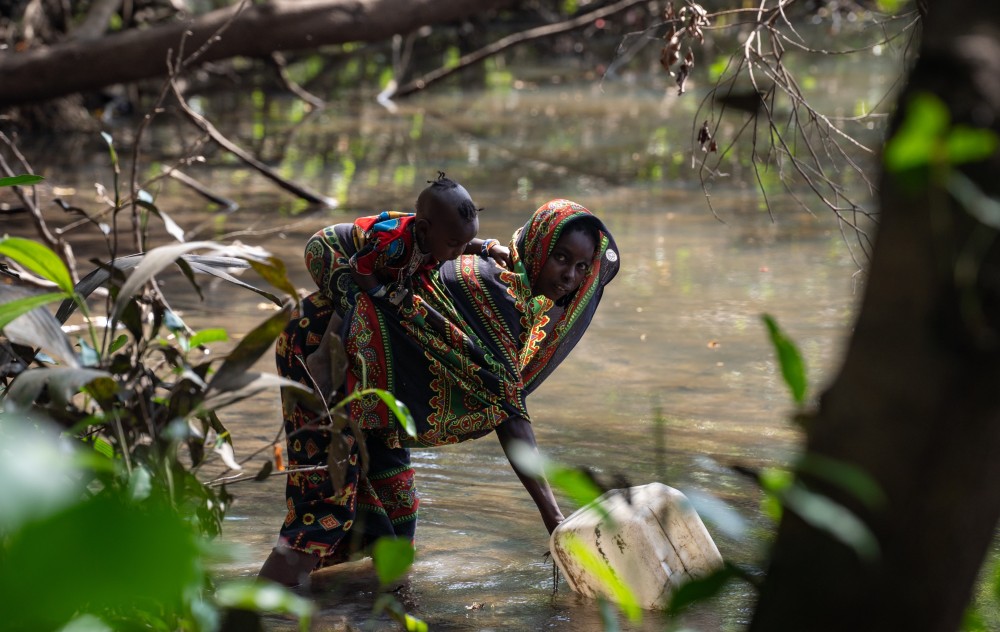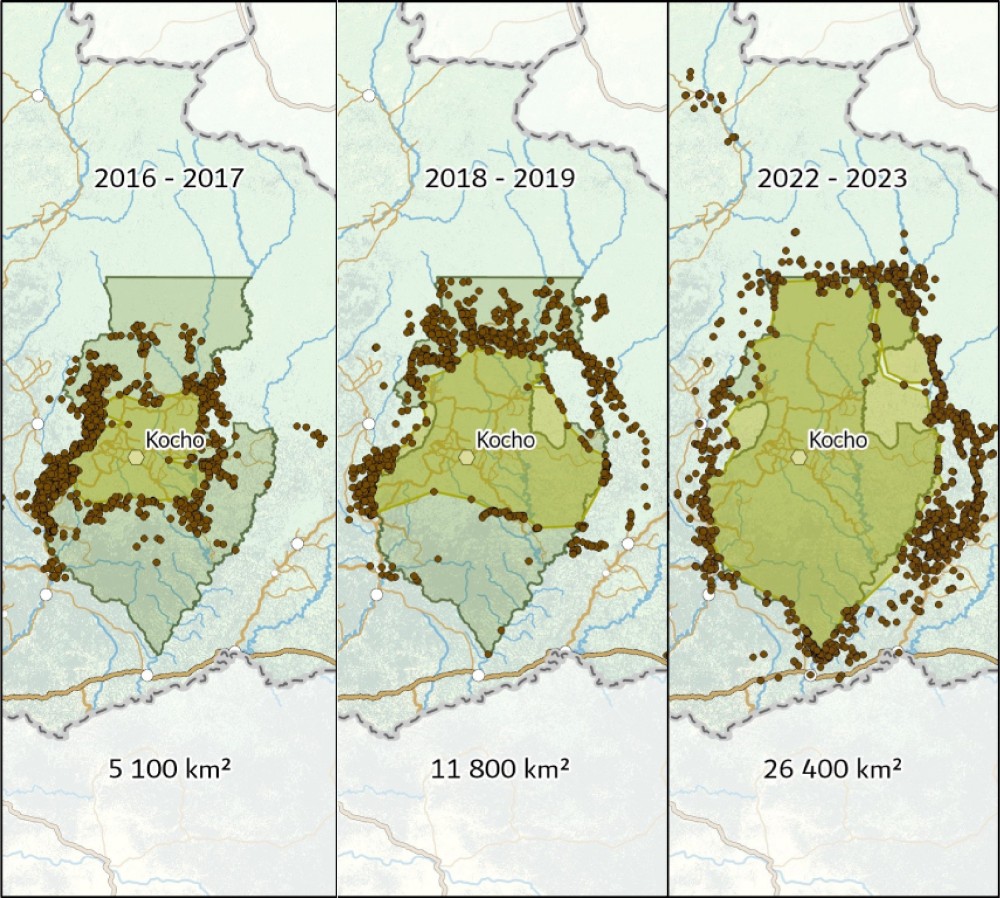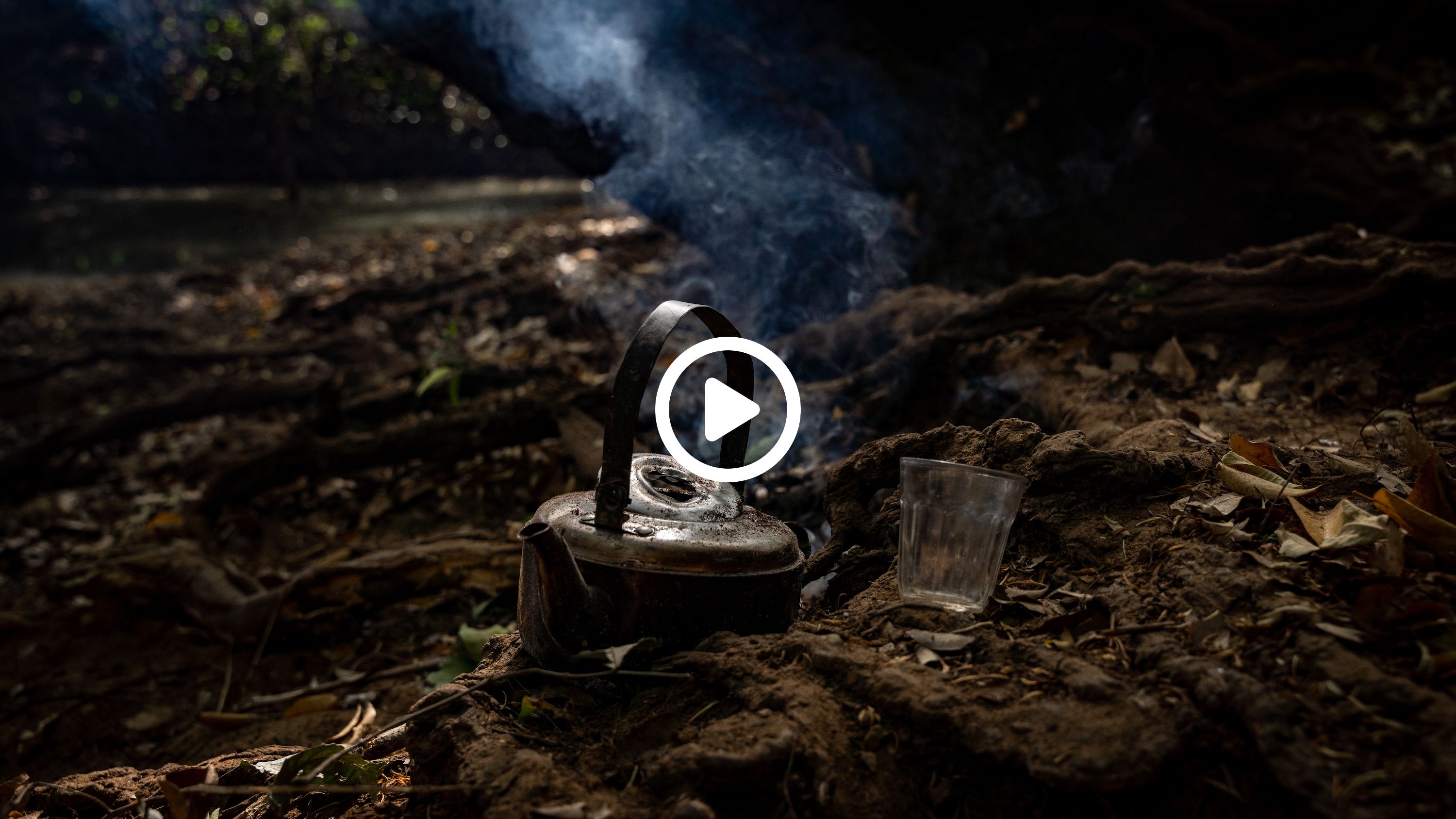African Parks pioneers a peaceful approach to meeting the needs of people and wildlife
In Central Africa, African Parks has pioneered a unique and peaceful approach to managing the devastating effects of pastoralist movement across the landscape. As increasing habitat destruction and loss of resources, exacerbated by climate change, create an ongoing challenge for human-nature coexistence, a solution is taking hold, rooted in common needs and cemented by the simple act of sharing tea.
Spanning over 64,000km2 in the Eastern Central African Republic (CAR), Chinko is home to one of Africa’s most important biodiversity areas. Flanked by the Democratic Republic of the Congo in the south, South Sudan in the east and Sudan in the north, the Chinko Conservation Area (CCA), is characterised by a mix of Sudanian savannah and Congolian lowland rainforest creating the largest continuous tropical woodland in Africa that holds one of the most pristine water systems. Altogether this mosaic landscape of Chinko provides an essential stronghold for Central Africa’s most vulnerable species, including some of CAR’s last remaining elephant, lion, African wild dog, chimpanzee, bongo antelope, and the iconic Giant eland.
Over the past decades, this vast landscape has endured increasing pressure from transhumance (nomadic) cattle herders moving droves of livestock south from Sudan and Chad into CAR, causing destruction to the land and its resources.
In 2014, African Parks signed an agreement with the Government of CAR to manage Chinko. At that time, despite decades of devastating exploitation by ivory poachers, rebels and livestock herders, remnant populations of key species persevered, thanks to the immensity of the landscape. But an urgent and focused approach was needed to conserve what was left if species were to avoid extinction. Surveys at the time revealed that most large wildlife had been reduced by over 80%, the local lion population had declined by more than 95% and less than 100 elephants remained.
The Impact of Transhumance Movement across the Chinko Landscape
"I lived in Chad until I was 26. But our forest is completely destroyed now, we don’t know why. Our cows die. So, we come now to Central Africa to rest. The only problem here are the Seleka (Central African armed group). They come to our camp asking for cows. But here in Ali Plains, next to Chinko they don’t come because Chinko surveys the area and it is safer." - Aladji Oumar, transhumant herder and Kashala (Chief)
Due to decades of political instability, population growth, and overgrazing, thousands of transhumance pastoralists are now forced to migrate south every year, mainly from South Darfur in Sudan, into the still intact savannas in eastern CAR where Chinko lies. Moving to avoid tribal conflict over ever-decreasing resources and in search of water and grazing for their livestock, the herders exert immense pressure on the landscape, burning grassland to create fresh grazing options, cutting trees, and allowing the spread of disease from cattle to wildlife. Hunting and poisoning wildlife in retaliation against human-wildlife conflict and for bushmeat adds to this growing impact. Armed and driven to ensure their own existence, the pastoralists often encounter resistance from sedentary communities, resulting in ongoing conflict and insecurity. This unregulated transhumance movement escalated to become the primary driver eroding the Chinko ecosystem.
A Peaceful Approach to Finding a Solution for People and Wildlife

"The transhumants respect us because we talk the same language. I am the first TANGO recruited in Chinko. What motivates me is that it is for the wellbeing of my country. Even when I feel tired, I remember this and I feel encouraged." – Ousmane Amadjoda, Chinko TANGO agent, since 2011.
To protect what biodiversity remained, African Parks proposed a land use planning strategy, together with communities and the government, to create a balance between sustainable resource use and the needs of people, while at the same time protecting wildlife and maintaining healthy ecosystems. To do this, creating a solution for peaceful co-existence between different cultures was essential.
As a result, ‘transhumance corridors’ were developed to help maintain sustainable grazing pastures away from Chinko’s protected area, reduce struggles with sedentary communities and mitigate conflict with wildlife. But to support this, Transhumance Engagement Officers or ‘TANGO’ agents, recruited from local herding communities, were needed as a vital connection between the park and the herders. In a first-ever initiative, these unarmed TANGO guards use their cultural and regional knowledge to peacefully negotiate the needs of the pastoralists ̶ while at the same time encouraging them to respect the boundaries that protect Chinko’s biodiversity.
With a common desire for peace and security lying at the heart of these negotiations, this approach has had remarkable results. Armed with tea, bags of salt and other supplies to distribute amongst the nomadic families, the TANGOs nurture relationships with the herders, inviting them to sit around their camp fires while they share tea and discuss the purpose of their role to protect Chinko which essentially provides security for both the people and wildlife of the region.

Creating Safety within Transhumance Corridors
In less than a decade, since the development of the transhumance engagement programme, security in the region has improved vastly and the use of firearms in community conflict around Chinko is almost eradicated. Herders now adhere to the corridors, understanding the benefit for both themselves and their cattle, and the area free of cattle and habitat degradation has expanded from roughly 5,000 km2 to over 26,000 km2. Wildlife numbers are recovering with an increase of over 200% in herbivores and predators since 2017.
Today African Parks employs over 140 unarmed TANGO team members. Given the success of this approach, a similar programme has been replicated in W and Pendjari national parks in Benin, in Zakouma National Park in Chad, and Odzala- Kokoua National Park in Republic of Congo where human-wildlife coexistence challenges exist.

On the Horizon
With Chinko’s most recent 2023 aerial survey of cattle around the CCA revealing 35,000 cattle and over 650 nomadic tents, it’s clear that despite the transformation that has taken place over recent years, in the face of extreme challenges, the task to manage the effects of the transhumance movements is ongoing and enormous. To manage the level of human impact and the destruction of natural vegetation in central Africa’s formally protected areas, it’s vital that an efficient land use strategy and community programmes that meet the needs of people, wildlife and habitats is ensured in perpetuity.
12 July 2023 – Melissa Reitz, African Parks
Your Support Goes a Long Way
At African Parks we are working everyday to protect Africa's last wild landscapes. By donating to us, you are making a difference and are giving hope to people and wildlife across the continent.
Donate